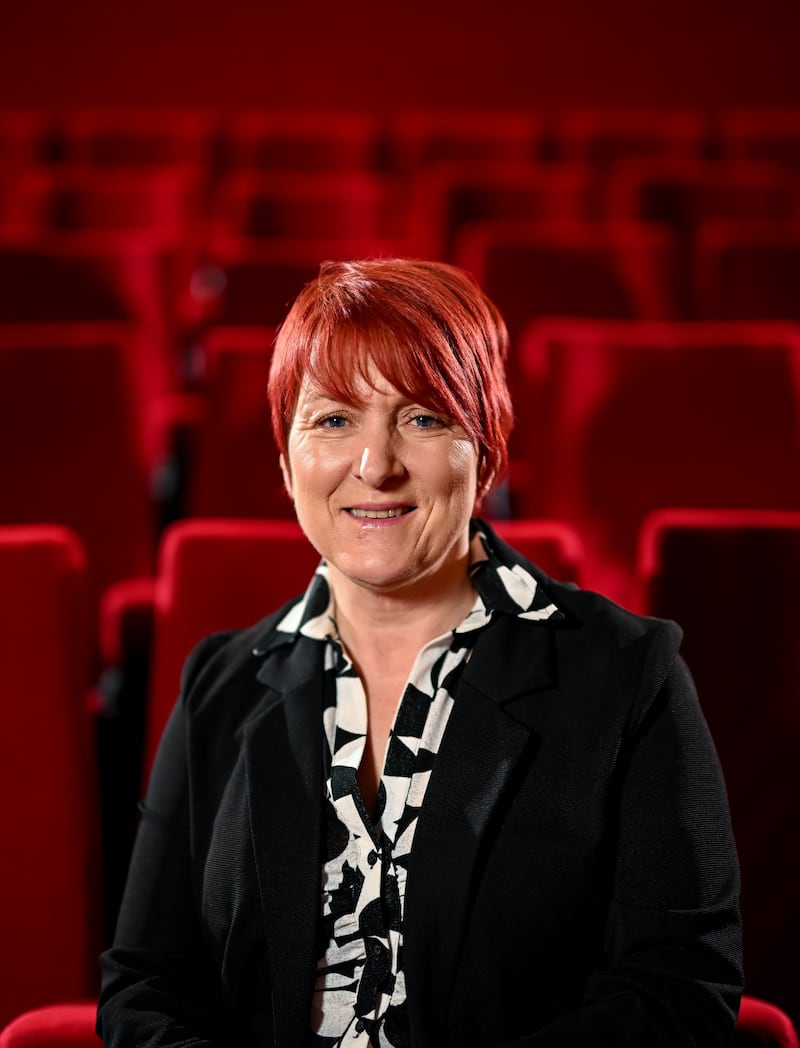The women’s game has had a specific evolution with standards bring driven sequentially by exceptional teams. Áine Wall, the subject of the latest Laochra Gael programme on TG4, was the lodestar of one such side, Waterford – five times All-Ireland champions in the 1990s.
There were also the 10 club All-Irelands she won with Ballymacarbry, the game’s oldest club, which has a freehold interest on the county championship they have held for 41 years.
A lethal forward, who scored 3-3 in her first All-Ireland final and is described by former mentor and team-mate Marie Crotty as “the best finisher the game has ever seen” she was awarded eight All Stars in an illustrious career and last year was inducted into the Gaelic Writers Association Hall of Fame.
Could she have envisaged how big the game would become in the two decades since her retirement?
READ MORE
“No, not at all. You could not. Kerry (nine in a row) brought it before we brought it to the next level. Then Mayo took it up (four in five years), followed by Cork (11 in 12 years) and Dublin (recent four-in-a-row winners) took up the mantle and Meath (the last two titles) have it now. Someone is always pushing it forward.”
Her story is a metric of the progress of women’s sport. In primary school girls weren’t allowed to play football and had to practise knitting while the boys were out in the field. Secondary school brought sport and the community games encouraged football and camogie.
In the current context of integration discussions between the GAA and the women’s Gaelic sports bodies, she is anxious to pay tribute to the people who brought football to where it is, but believes that bringing the games under one umbrella would be in the best interests of players.
“Girls that are playing are training four nights a week – twice football and twice camogie – which is too much for children.
“For that reason, yes I could see the benefit of combining and having a certain time frame for football and for camogie – to help limit demands on kids.”
The genesis of Waterford’s extraordinary decade has its origins in a wearyingly familiar lack of co-operation from all of four decades ago.
“In Ballymacarbry, we had a camogie and a football team. We were successful in winning the community games county final in both camogie and football and we were to represent Waterford in Munster community games. But weren’t the finals fixed for the same day – even as far back as 1984! And they would not change it so we were forced to choose.
“Football was chosen so that was the end of the camogie but you cannot blame anyone for saying, ‘that’s not fair’ and walking away. I don’t remember the details but I know that was the last time camogie was played in Ballymac club.
“It was that community games team that drove on the Ballymacarbry club to All-Ireland success, which in turn drove the county.”
When Waterford won their first All-Ireland in 1991, 14 of the players were from Ballymac. June Whyte from Kilrossanty completed the line-up.

Two of the big trophies in the club game are named after Ballymacarbry people. The All-Ireland winners receive the Dolores Tyrrell Memorial Cup, in honour of a team-mate who died from cancer in 1993, whereas the Munster champions are presented with the Michael Ryan Cup, named after the legendary manager of both club and county.
Áine Wall was involved in a couple of significant firsts for the women’s game. In 1986 the Waterford juniors played in the first All-Ireland final played in Croke Park and 12 years later the county beat Monaghan in the first senior final to be televised.
She wears the pioneering status lightly.
“Looking back, there’s great pride in what you did even if at the time you don’t realise that you’re making history. We had a great team and a great time – we enjoyed doing what we were doing. It goes by so fast.
“I was in Croke Park last year for our reunion and to look out and see the thousands who were at it and all the stands open – as it should be, because the game is lovely to watch – was great, seeing all that deserved recognition.”
Wall is ambivalent, however, about aspects of modern football when asked would she like to have had her time in the contemporary game instead of 30 years previously.
“I’m not too sure that I would. I think the brand of football we played in its simplicity was fabulous. I wouldn’t be cut out for gym work and all that – it wouldn’t be me, even a younger me! It’s very pressurised.
“We launched it [the programme] here in my house on Saturday night. The girls were in and we were remembering the laughing, the fun and the craic.
“I was at a club training session there recently and they were timing how long it took to leave the dressingroom, how long to get warmed up. What in the name of God! You have to have the laughter.”
– Áine Wall appears on Laochra Gael on TG4 this Thursday evening at 9.30
















